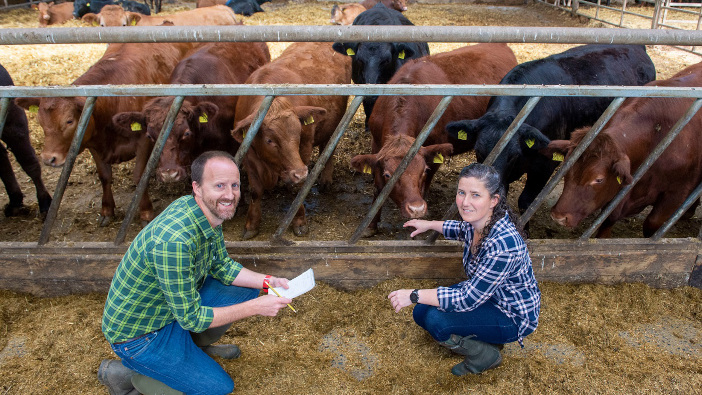The GreenShed system, headed by Scotland’s Rural College, uses cattle waste products to power a methane capturing system and grow indoor crops, and it has received £2.9 million from the UK Government via its Net Zero Innovation Portfolio (NZIP).
In 2021, GreenShed received £200,000 worth of NZIP funding to refine its design. The new £2.9m funding is for the building of the Greenshed; it forms part of a £54m government investment for projects across the country to develop technologies that remove carbon emissions from the atmosphere.
The shed will be built in Midlothian, Scotland, supported by partners at the University of Strathclyde, Agri-EPI Centre, Edinburgh-based No Pollution Industrial Systems Ltd, Galebreaker Agri, Organic Power Ireland, N2 Applied and Saturn Bioponics. The build is expected to begin in late 2022.
How does the Greenshed system work?
The system has the potential to remove the equivalent of 237 tonnes of carbon dioxide per farm per year. In order to do so the shed’s anaerobic digestion plant will use waste cattle bedding to produce the energy required to run a methane capture system. Any excess energy will then be used to power a vertical farm and low-carbon fertiliser system.
With the Greenshed, in practice, a farmer could benefit from an additional income stream of up to £40,000 a year. It is also estimated that a 100-cattle Greenshed could result in savings of £1,000 a year in fertiliser and heat energy costs.
Professor Wayne Powell, principal and chief executive of SRUC, said: “GreenShed provides an innovative working example of how collaboration can effectively shape a more resilient, nature-positive producer supply chain that’s aligned with the aims of the national Food Strategy. We are hugely grateful to ministers for their support.”
Project lead, SRUC’s Dr Carol-Anne Duthie said: “We’re thrilled to have received this funding to make the exciting GreenShed project a reality. The value of the project is clear: farmers will improve their profitability, expand their saleable food products, and reduce the environmental impact of beef production.”


